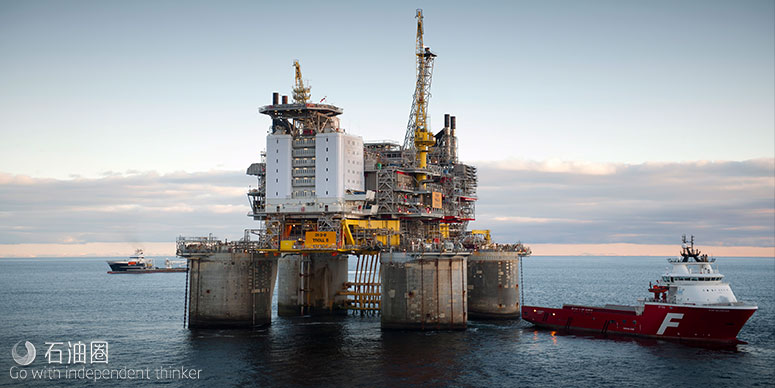Customized tubular handling
To install the tong, the service provider uses the HiPer control system to remotely control the power tong and tong-positioning system. This eliminates the need for an additional control system, further reducing operational cost and complexity. Multiple safety features, including emergency shutdowns and interlocks, decrease the risk of accidents and injuries.
For this particular TLP, the tubular handling package includes two automated side door (ASD) elevators, an automated false rotary system, and a stress joint handling elevator. Each component was customized to accommodate the nonstandard outer diameter of the riser and avoid any marking or damage to the thermal sprayed aluminum coating on the riser and pipe joints. The coating is designed to assure well integrity by preventing the pipe from deteriorating or rusting over the 20- to 30-year life of the well.
The hydraulically operated ASD elevators, with bushings to suit non-API sizes and the non-marking requirement, are API 8C certified for lifting and hoisting large outer diameter casing strings. The two elevators are interlocked to prevent both elevators from being opened at the same time, thus mitigating the risk of a dropped string.
The automated false rotary table (AFRT) allows the rotary table to fully open to 49.5 in. to enable pass-through of a 48.5-in. OD assembly. The AFRT also allows the ASD elevator, once opened, to disengage from the TTR without the need for manual handling. After disengaging, the ASD elevator is locked into the standby position, which allows the AFRT to close. The second ASD elevator can then land on the closed AFRT, where the bails are removed and installed on the first elevator in standby.
The stress joint elevator (SJE) is used to handle the first connection, which has a weight of 17 tons and a pipe OD of 15.2 in., as well as the subsequent connections with ODs of 14.347 in. and 14.488 in. The SJE also eliminates the need for a special bushing to be installed on the ASD elevator, therefore reducing cost and increasing handling efficiency.
Ensuring connection integrity
One of the most important aspects of the ongoing riser installation operation is ensuring the integrity of the delta torque connections. Connection failures account for an estimated 90% of casing failures, with even one improper connection resulting in operational failure or problems, including shut-ins and lost production. To avoid that risk, connections must be made up properly so that seals withstand high-torque and bending stresses.
As part of the customized installation service, Weatherford combined a torque-turn monitoring system with a powerful analyzing software platform to monitor, evaluate, and report torque data for makeup and breakout of all the delta torque connections. The JAMPro torque-turn monitoring system enables remote monitoring and control of torque-turn data during tubular makeup. The system also provides histograms and trend analysis to enter torque-turn data into the well log for enhanced monitoring.
To qualify the delta torque connections reported in by the JAMPro system, the company deployed the TorkPro 3 torque/turns analyzing software. The TorkPro software enables real-time analysis of the makeup process and evaluates connections for acceptance or rejection, minimizing response times to connection issues.
Results
Using the customized, fit-for-purpose tubular running equipment, the initial riser installation on the TLP was completed in 36 hours. A total of two installations were performed in 2016, enabling the operator to successfully move forward with field development. Lessons learned in rigging up the equipment and positioning the tong have streamlined the process, improving both safety and efficiency. Over a period of 12 months, the TTR installation package will be used to develop nine producer wells and two water-injection wells.

 石油圈
石油圈
